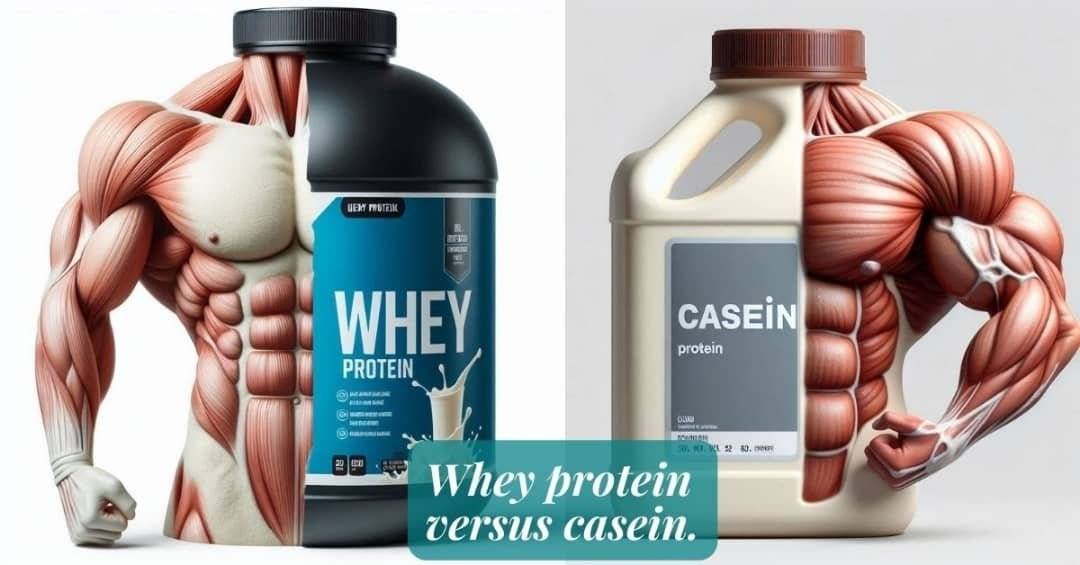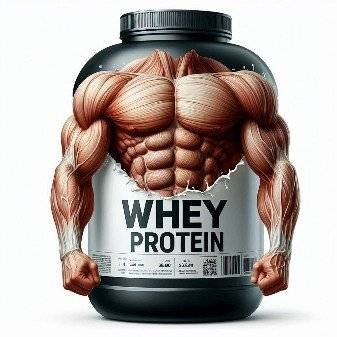
Table of Contents
Casein and whey are two of the most popular high-quality proteins that have stood the test of time. They contain all the essential amino acids and are derived from dairy milk but they are remarkably different from each other.
There are two types of whey protein. These are whey protein isolate and concentrate. While the isolate contains about 90% protein, the concentrate has about 80% protein but with a little more carbs and fat than whey protein isolate after its conversion to powder.
Casein, on the other hand, has four types which are αS1‐Casein, αS2‐casein, β‐casein, and k‐casein.
A typical dairy milk contains about 80% casein and 20% whey. Differences in their bioactive peptide contents further distinguish both types of milk protein. Peptides contained in casein boost your immunity and digestive system and reduce your risk of stroke by preventing blood clots and reducing high blood pressure.
On the other hand, immunoglobulins found in whey have antioxidant, antitumor, anticancer, and antimicrobial effects. They also help in the absorption and transport of certain dietary nutrients.
In previous articles, we discussed weight loss protein intake, ways vegetarians get enough proteins, and high-protein and low-carb diets. This article will discuss whey protein versus casein.
Casein vs whey. 12 points of differences.
Casein and whey are high-quality proteins of dairy origin with similar composition and nutritional benefits in the body. However, they can be distinguished in the following ways as shown in the table below.
| Casein | Whey |
|---|---|
| 1. Pricier. | Cheaper. |
| 2. It’s the solid byproduct of cheesemaking. | It’s the liquid byproduct. |
| 3. With casein the amino acid level in the blood remains elevated up to 4-5 hours after consumption. | The amino acid level usually remains elevated for not more than 90 minutes after consumption. |
| 4. Forms curds when exposed to stomach acid. | Does not. |
| 5. Better taken before periods of fasting like bedtime. | It’s as ideal due to its fast digestion and absorption rate that can leave you hungry earlier than you would like. |
| 6. Not ideal due to slow digestion and absorption. | Better taken before and after workouts or intense physical activities requiring muscle recovery. |
| 7. Tends to form lumps during mixing. | It easily mixes with water to make shakes and has a better consistency. |
| 8. Doesn’t taste as good as whey. | It tastes considerably better. |
| 9. Not as common. | Commonly in use. |
| 10. Has a thicker texture than whey when mixed. | Lighter than casein when mixed especially with water. |
| 11. Slower absorption rate. | Faster absorption rate. |
| 12. A study1 has shown a mixed casein meal sustains an increase in blood leucine level for 7 hours which provides a more beneficial positive nitrogen balance. | A mixed whey meal is not as beneficial due to the faster but shorter period of availability of its amino acids. |
In reality, whatever benefit there is in one type of protein Is also present in the other but may not be to the same extent. Research published in the National Library of Medicine (NLM) found both types of proteins have very similar effects on the strength, body composition, and agility of subjects.
Another research published in the National Library of Medicine (NLM)2 suggests that 40g of Casein protein taken 30 minutes pre-sleep and after resistance training may be effective for muscle recovery.
Whey or casein after workout.
Workouts demand a quick supply of amino acids to boost performance and muscle recovery. On this note, you’ll need protein that can be quickly digested and absorbed to meet that urgency and that is why whey is the protein of choice.
Casein protein takes much longer to digest and absorb thereby tasking your digestive system in a manner that isn’t suitable for workout periods. Secondly, the amino acids from casein protein intake simply can’t be made available as quickly as they are needed.
The stress on your digestive system and the time it takes before amino acids become available are the main drawbacks of casein intake but the latter represents the main reason whey protein is better suited for before, during, and after your workout.
Casein vs whey for muscle building.

Though research has shown both proteins help in building muscles, whey protein contains slightly more of the amino acid that kickstarts the muscle-building process called leucine. This advantage, coupled with its quick availability gives whey protein its a slight edge over casein in muscle building.
In a nutshell, whey protein stimulates muscle protein synthesis to a greater extent than casein or soy proteins according to the Journal of Food Science.3
Whey contains about 11-12% leucine whereas casein leucine content is about 9%. However, all amino acids are important in building muscles and your overall protein consumption is more important in muscle building than type of protein.
Endeavor to consume adequate amounts of protein daily. The subject of daily protein intake for muscle growth was well covered in a previous article you may want to read. A table to guide you on daily protein intake for muscle gain for a man or woman was also provided.
Casein or whey for weight loss.
Keep in touch by signing up for our newsletter:
Both casein and whey protein can help you lose weight but casein, due to its extended period of digestion and gradual amino acid release, keeps you feeling fuller much longer therefore is more beneficial for weight loss.
With less hunger resulting from casein intake, you tend to eat less frequently, especially in between meals. The outcome is less calorie consumption than you would normally have if you have to deal with the hunger that comes with calorie restriction during a weight loss program.
Weight loss from high protein intake is something that has been proven by research. This was well discussed in a previous article you may want to read, titled Weight Loss Protein Intake, In the article is a note on what protein is best for weight loss. The result of a 1-month high protein intake for weight loss was also presented.

Whey casein blend.
Whey-Casein blend is the perfect protein blend combining the qualities of both protein types in one mix. What you get is fair taste, fair thickness, fair texture, fair mixing for shakes, plus better weight loss and muscle-building results.
Wherever or whatever casein is lacking you get from the whey and vice versa. You do get the best of both proteins in one mix suitable for use in achieving weight loss goals, muscle building, and recovery following workouts.

Whey casein blend is a growing trend and is backed by research. The beautiful thing about this trend is that unprocessed milk protein has both protein types. In other words, the blend is naturally available in dairy milk but with casein making up the bulk of the protein on a ratio of 4:1. There are factory-made blends with casein and whey present on an equal ratio of 1:1.
So, that’s it on this topic and I hope it was worth sharing, please share and feel free to use the comment section to ask any questions you may have. See you on the next topic.
References.
- Wilborn CD, Taylor LW, Outlaw J, Williams L, Campbell B, Foster CA, Smith-Ryan A, Urbina S, Hayward S. The Effects of Pre- and Post-Exercise Whey vs. Casein Protein Consumption on Body Composition and Performance Measures in Collegiate Female Athletes. J Sports Sci Med. 2013 Mar 1;12(1):74-9. PMID: 24149728; PMCID: PMC3761774. ↩︎
- Kim, J. (2020). Pre-sleep casein protein ingestion: New paradigm in post-exercise recovery nutrition. Physical Activity and Nutrition, 24(2), 6-10. https://doi.org/10.20463/pan.2020.0009 ↩︎
- Devries, M. C., & Phillips, S. M. (2015). Supplemental Protein in Support of Muscle Mass and Health: Advantage Whey. Journal of Food Science, 80(S1), A8-A15. https://doi.org/10.1111/1750-3841.12802 ↩︎































































































































































Wow amazing blog layout How long have you been blogging for you made blogging look easy? The overall look of your web site is magnificent as well as the content.
The website layout is perfect, the content material is rattling, it’s superb.
Pretty section of content and in fact enjoyed your blog posts. Anyway I will be subscribing to emial.